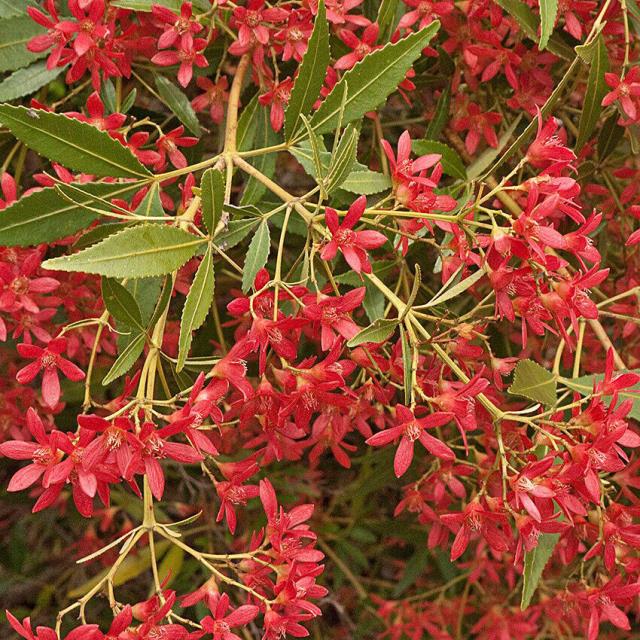By Beatrice Hawkins
The year is almost over and it is time for reflection.
As I have once again just come home from a trip away I keep thinking of the words of one of my favourite old Slim Dusty songs: “I’ve been, I’ve seen and I’ve done that!”
Over the last 2 years I’ve done a lot of miles by car and by plane and seen a lot of this country and you have heard about most of what I’ve seen along the way.
How vast and diverse this spectacular country of ours is… and how I love it!
Even on this trip I’ve seen devastatingly dry bare paddocks – but then a few miles further on there was green grass and fat stock.
Tenterfield had devastating fires but has obviously had rain as there are green paddocks and grass on the roadsides. The result of the fires was incredible to see but the ability of our wonderful gum trees to regenerate has always fascinated me. The areas that were burnt earlier have new bright green leaves sprouting up the blackened trunks and branches.
I guess what I am saying is that this wonderful country of ours is diverse and resilient. It will rain again and it will bounce back and so will the people. Aussies are too tough to be defeated by the weather but I hope and trust that we will all have learnt some lessons with regard to our efficient use of that essential commodity: water.
The trip through the Riverina earlier in the year was interesting and was so dry but then contrasted with the beauty of the irrigation area and the town of Mildura with its majestic native trees shading the streets.
In Broken Hill down came the rain, dams were filled and the Warrego River ran into the Darling. The speed with which the country responded was astounding. I had to extend my stay until the red dirt roads became passable to the area I was visiting and by the time they were, the roadsides and surrounding paddocks were already green. Each day when I got up and looked out the window the grass was visibly higher.
In September, Western Australia was wonderful, with mile upon mile of golden canola and growing cereal crops. Such a change from the devastating drought conditions on this side of the country.
The wild flowers were a spectacular treat. I remember one area where there was a huge water pipe bringing water from the coastal fringe to the drier inland. Growing alongside it in profusion were hundreds of the most spectacular green and red Kangaroo paw in full glorious flower. Banksias of all colours and sizes were everywhere. Paper daisies and blue Leuchenaltia growing along the roadsides providing brilliant colour with white native Clematis and red “running postman” twining through the trees.
On my trip away last week I was back in the area of the central coast of N.S.W. where I grew up. I must admit I had forgotten in 50 plus years since I left, just how majestic the black butts were and how stunning the bark on the spotted gums. I had not forgotten however, the beauty of the N.S.W. Christmas bush native to that area or the majestic red Gymea lilies abundant in the surrounding bush.
One thing I didn’t find that I used to pick each Christmas, was the Australian native Christmas bell. I loved them as a child and would pick a bunch for my mum each year. Christmas bush, Christmas bells and red gum tips were my mum’s all-time favourites and abundant in the area.
Christmas Bush, Ceratopetalum gummiferum, is recognised as the N.S.W. Christmas flower. The flowers are actually small and white. It is the red calyx that is seen as the “flower”. It prefers full sun and well-drained soil. It grows particularly well in the sandstone country north of Sydney.
In WA the Christmas bush, nuytsia floribunda, has brilliant yellow/orange flowers, is semi parasitic needing grass as a host, is frost resistant and likes sun.
Queensland’s Christmas flower is calanthe triplicata or Christmas orchid. It is an evergreen and ideal for pots in heavy shade and moist soil. It has beautiful spikes of white flowers up to 1.5 metres long.
Victoria claims Prostanthera losianthos and it is either a shrub or small tree up to about 3 metres and will grow and bloom in heavy shade or full sun. It can have either white, mauve or pink blossoms.
In Tasmania it is my favourite, the Christmas bell, Blandfordia punicea. I didn’t know it grew there. I had believed it was native only to NSW. It prefers sandy soil and full sun. My dad used to tell me of them being picked in an area north of Newcastle near Williamtown airport during the depression and the Second World War in large quantities for the Sydney markets.
South Australia’s Christmas bloom is Bursaria spinosa or native blackthorn. It is a small tree that produces masses of white flowers and thrives in light shade and well-drained soil.
This year it really is that “I’ve been, I’ve seen and I’ve loved that!”
My prayer is that by the time I write the next column in the New Year, we will have had widespread, drought breaking, rain and the new 80 litre water restrictions that commence in Warwick this Thursday the 19th will be able to be lifted and lawns will be green and need cutting!!
Thanks for reading and a Safe and Happy Christmas and New Year to everyone.
*This is an old article that has been digitised so our readers have access to our full catalogue.







